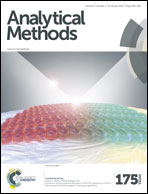A rapid and non-invasive method for the classification of natural tannin extracts by near-infrared spectroscopy and PLS-DA
Abstract
Vegetable tannins are plant extracts that have traditionally been used to tan leather. These extracts are polyphenolic compounds that are widely distributed in plants and have the ability to precipitate proteins since their structures are rich in hydroxyls. Tannins can be classified into two groups: the hydrolyzable tannins and the proanthocyanidins, also called condensed tannins. In this study, 49 samples of vegetable tannin extracts, representing six commercially available types, were analyzed by near infrared and multivariate analyses (HCA and PLS-DA). The first derivative of the NIR spectra proved useful in the differentiation of the extracts, as it provided information on the main absorption bands, which are related to the chemical composition and structure. A well-defined separation between condensed (quebracho and mimosa) and hydrolyzable tannins (tara, myrobalan, chestnut and valonea) was observed by HCA (unsupervised method). The PLS-DA supervised method showed excellent results regarding classification, with a sensitivity and specificity of 100%. From the results, we concluded that this method may be useful for the quality control of commercial tannins and correct identification, as well as in mitigating fraud since other extracts and products can also be detected.

- This article is part of the themed collection: Analytical Chemistry in South America

 Please wait while we load your content...
Please wait while we load your content...